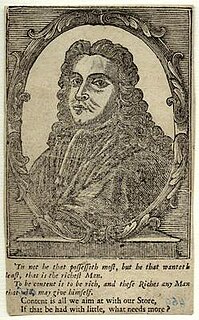Related Research Articles

Sir (George) Gilbert Scott, styled Sir Gilbert Scott, was a prolific English Gothic revival architect, chiefly associated with the design, building and renovation of churches and cathedrals, although he started his career as a leading designer of workhouses. Over 800 buildings were designed or altered by him.

Anthony Ashley Cooper, 7th Earl of Shaftesbury, styled Lord Ashley from 1811 to 1851 and then Lord Shaftesbury following the death of his father, was a British politician, philanthropist and social reformer. He was the eldest son of Cropley Ashley-Cooper, 6th Earl of Shaftesbury and his wife Lady Anne Spencer, daughter of George Spencer, 4th Duke of Marlborough, and older brother of Henry Ashley, MP.

William Strickland, was a noted architect and civil engineer in Philadelphia, Pennsylvania; and Nashville, Tennessee. A student of Benjamin Latrobe and mentor to Thomas Ustick Walter, Strickland helped establish the Greek Revival movement in the United States. A pioneering engineer, he wrote a seminal book on railroad construction, helped build several early American railroads, and designed the first ocean breakwater in the Western Hemisphere.
The year 1824 in architecture involved some significant events.

John Notman was a Scottish-born American architect, who settled in Philadelphia. He is remembered for his churches, and for popularizing the Italianate style and the use of brownstone.

James Pigott Pritchett was an architect of London and York whose practice stretched from Lincolnshire to the Scottish borders.
Samuel Whitfield Daukes (1811–1880) was an English architect, based in Gloucester and London.

Kissy is a neighborhood on the eastern end of the capital Freetown in Sierra Leone. It is also home to numerous health services, including a United Methodist Church Health and Maternity ward as well as Kissy Mental Hospital. It is also home to over 500 Liberian refugees. The Kissy Road Church of the Holy Trinity is located in Kissy Village and it should not be confused with the Church of the Holy Trinity on Kissy Road which in 1999 was completely burned down by RUF rebel forces. A restoration plan was put in place to restore that church and the building has been restored. The church on Kissy Road also ran a school.

John Dando Sedding was an English church architect, working on new buildings and repair work, with an interest in a "crafted Gothic" style. He was an influential figure in the Arts and Crafts movement, many of whose leading designers, including Ernest Gimson, Ernest Barnsley and Herbert Ibberson, studied in his offices.
Christiana Edmunds, was an English murderer, popularly known as the "Chocolate Cream Killer", who carried out a series of poisonings in Brighton during the early 1870s. Edmunds purchased confectionery from a local shop and laced them with strychnine before returning them to be sold to unsuspecting members of the public. Her actions resulted in several people becoming seriously ill, and at least one death. Arrested and put on trial, Edmunds was initially sentenced to death. However, this was later commuted to life imprisonment. She spent the rest of her life in at the Broadmoor Criminal Lunatic Asylum, dying there in 1907.

John White was the rector of a parish in Dorchester, Dorset, England. He was instrumental in obtaining charters for the New England Company, and the Massachusetts Bay Company. He took a close personal interest in the settlement of New England.
John Whichcord Snr (1790–1860) was a British architect who worked in Maidstone, Kent and designed many public and institutional buildings in the town.

Sheriff Hill Lunatic Asylum was located at Sourmilk Hill in Sheriff Hill, Gateshead, Tyne and Wear. At that time Sourmilk Hill Lane continued across Church Road and onto what is today Larne Crescent, the asylum occupied the land on the corner of modern-day Larne Crescent and Church Road. It operated during the nineteenth century and provided isolation and medical care to hundreds of patients at a time when disease and illness in England were treated predominantly through isolation and asylum. At least two patients escaped from the institution, which closed around 1880.

The Holy Trinity Church is the parish church of the village of Blythburgh in the East Suffolk area. It is part of the Church of England Halesworth deanery in the diocese of St Edmundsbury and Ipswich, and has been listed Grade I on the National Heritage List for England since December 1966.
Frederick Hyde Pownall was a British architect. He was County Surveyor for Middlesex for about 45 years, and designed both Anglican and Roman Catholic churches.

Edward Newenham Hoare, a graduate of Trinity College, Dublin was an Irish Anglican priest: he was Archdeacon of Ardfert from 1836 to 1839, then Dean of Achonry from 1839 to 1850; and Dean of Waterford from then until his death.
Kensington House was an academy established by 1756 in Kensington, London, England. The school was operated by a variety of people until about 1813 or 1815. After being operated as a Catholic boarding house from 1815 to 1825, it was the site of a private asylum beginning in 1830.
Holy Trinity Church, Margate is a Church of England church in Margate, Kent, and in the Diocese of Canterbury.
The Very Reverend William Gowan Todd, D.D. (1820-1877) was a nineteenth-century author and cleric. In the later years of his life he founded and managed St. Mary's Orphanage, Blackheath, England, where he died on 24 July 1877.
References
- 1 2 3 4 5 6 7 8 9 10 11 12 13 14 15 16 17 18 19 20 21 22 23 24 25 26 27 28 29 30 31 32 33 34 35 36 37 38 Lee, Anthony. "The sad tale of the Margate architect and the Brighton poisoner" (PDF). Margate in Maps and Pictures. Retrieved 2020-04-16.
- ↑ Walton, Hugh Merscy. "A short history of Holy Trinity Church Margate 1825-1932" (PDF). Retrieved 2020-04-17.